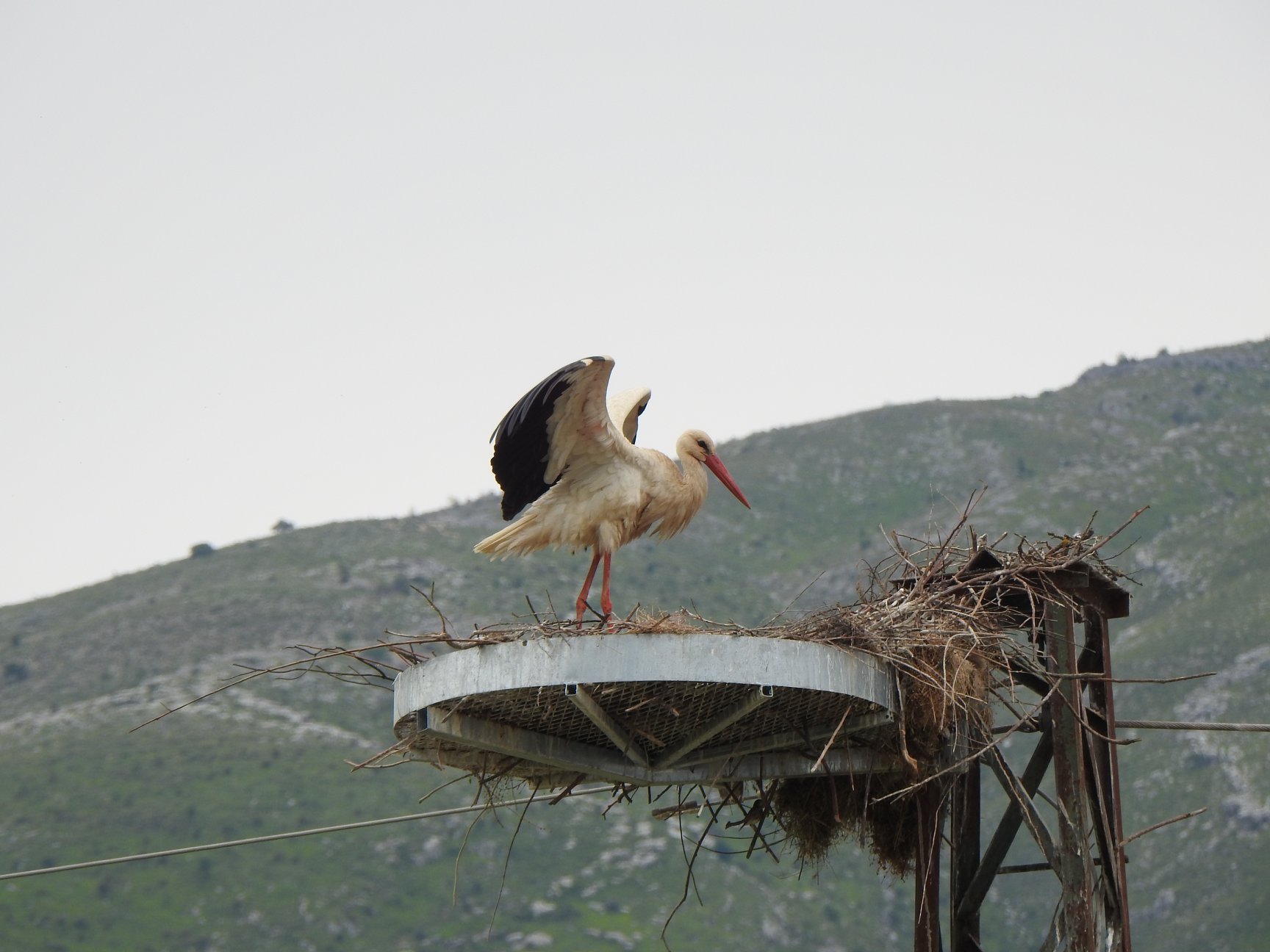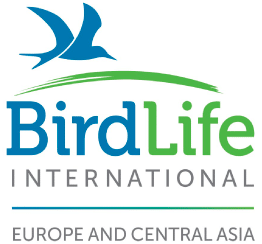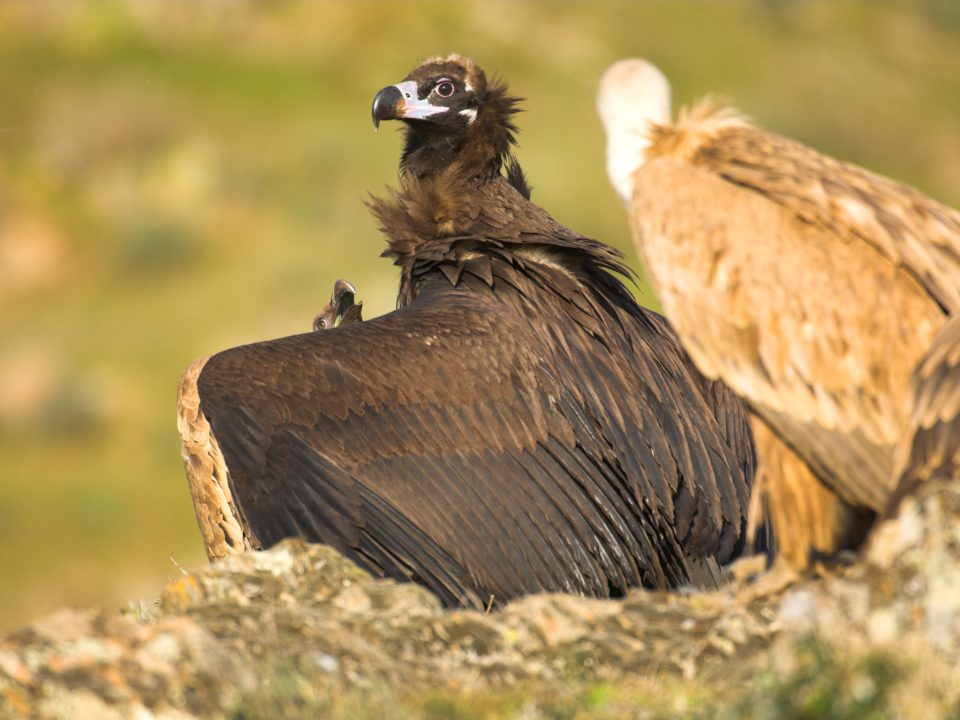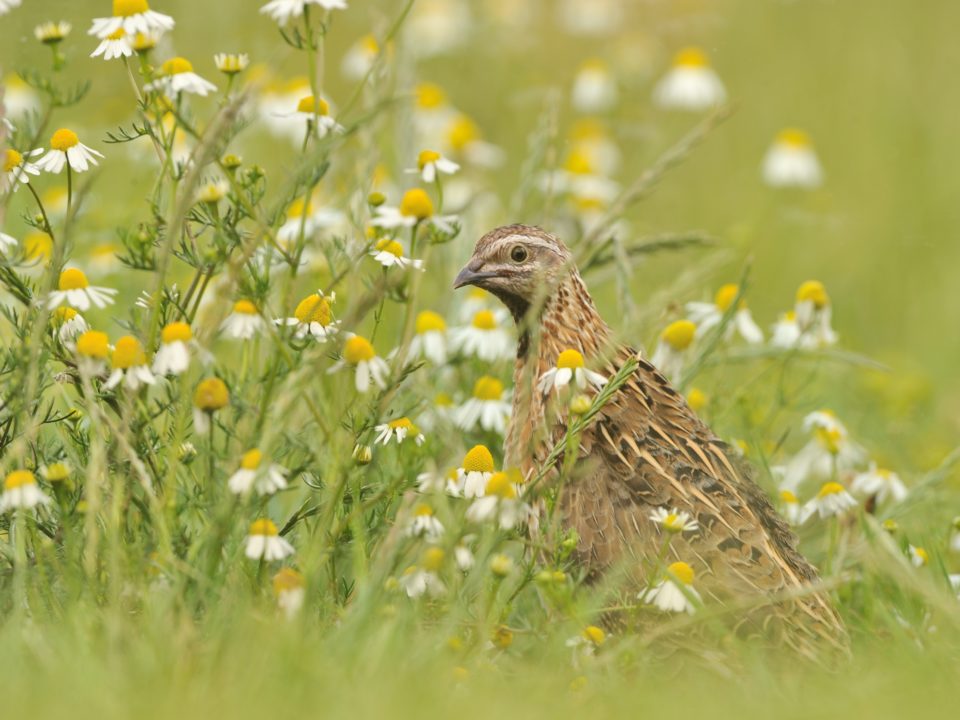
White Stork, Albania © PPNEA
How can we make electric powerlines safe for White storks?
After traveling more than 13,000 km to reach its breeding grounds, the exhausted White stork just needs a place to rest and build a nest. Unfortunately, where it chooses to land could mean the difference between life and death. This species has evolved to nest on tall trees. But, when solitary trees are scarce and human settlements spread, it often resorts to electricity poles not only to perch, but also to build its enormous nests. There are thousands of recorded cases of storks dying from electrocution all along their migration route. So how can we stop this from happening?
Prevention is better than cure, and the best way to stop fatal accidents is to intervene before the power lines have even been built. BirdLife is part of the Energy Task Force, a partnership of governments and organisations that work with energy companies at the planning stage. We work to convince project developers that power lines – and other dangerous structures such as wind farms – are not built in migration flight paths or near important habitats for birds. Our Sensitivity Map shows “danger zones” across Europe, the Middle East and Africa, and is free for anyone to use.
But even if the power lines have already been built, they can still be made bird-safe. In Albania there are only five pairs of white storks, most of whom nest on top of electricity poles. The conservation organisation Protection and Preservation of Natural Environment in Albania (PPNEA) is working hard to make sure that this species does not disappear from the country completely. One of their priorities is to create artificial nesting platforms near power lines. To date, they have installed two platforms in southern Albania, and this year they plan to install another three. One pair of storks have already adjusted to this artificial platform and built their nest on it. Now, four chicks from this nest are ready for migration – proof that this simple yet effective solution offers the hope of recovery for Albania’s White storks.





